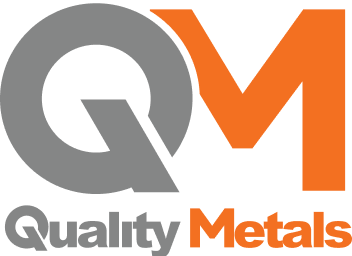Steel is one of the most versatile building materials in the industry but only when you’re using the right metal panel for the job. Every panel profile is engineered with a purpose, whether that’s shedding water on a low-slope roof, adding texture to an accent wall, or covering long structural spans with minimal support.
Understanding your options up front can save time on the jobsite and ensure long-term performance. Below, we’ll walk through the most common panel types used in roofing, siding, and beyond along with when and why to use each.
Concealed Fastener Panels: Clean, Sleek, and Weather-Resistant
Concealed fastener panels offer both function and form. Since the fasteners are hidden beneath the panel seams, you get a smoother, more modern appearance plus added protection from water intrusion and UV exposure.
Snap Lock Panels
- Best for: Residential and light commercial roofing
- Minimum slope: 3:12
- Why choose them: Snap together without mechanical seaming, offer crisp lines and fast installation
Mechanical Lock Panels
- Best for: Low-slope roofs, high-wind or storm-prone zones
- Key benefits: Strong seam engagement, suitable for slopes as low as 0.5:12 depending on spec
- Certifications to look for: UL 580 (uplift), UL 2218 (impact), and TDI-approved systems
These panels are often chosen for architectural projects where both performance and presentation are a top priority.
Exposed Fastener Panels: Efficient, Durable, and Cost-Effective
Exposed fastener systems are the go-to solution for fast, functional installs. You’ll see them on agricultural buildings, warehouses, and garages, as well as homes with a rustic or utilitarian aesthetic.
PBR Panel
- Best for: Roofing and siding on barns, shops, and commercial spaces
- Strengths: Deep ribs improve strength and water shedding, purlin-bearing leg supports better overlaps
U Panel
- Best for: Residential siding or garage/shop builds
- Strengths: Closer rib spacing gives a smoother appearance; blends better with residential finishes
7/8″ Corrugated Panel
- Best for: Accent walls, ceilings, custom interiors
- Strengths: Lightweight, visually bold, flexible for interior or exterior use
Exposed fastener panels are often easier to install, require fewer specialized tools, and can be cost-effective for large square footage.
Specialty Panels: More Than Just Roofing and Walls
In addition to the primary roofing and siding systems, specialty metal panels play important roles in modern builds.
Flush Wall & Soffit Panels
- Used in soffits, breezeways, porch ceilings, and accent walls
- Often vented to allow for air circulation under roof overhangs
- Provide a clean, seamless appearance—especially in commercial settings
- Ideal for privacy fencing and perimeter applications
- Durable, wind-resistant, and low maintenance
- Frequently used in both residential and commercial environments
These profiles are excellent for design consistency when you want the entire building envelope from roof to fence to feel unified.
Know What You Need? Let’s Find the Right Fit
At the end of the day, the right metal panel depends on where it’s going, how it needs to perform, and what kind of look you’re going for. From exposed fastener panels that move fast to concealed systems that elevate the finish, it’s worth taking the time to match your panel to your project goals.
Sourcing the Right Panel? We Can Help.
At Quality Metals, we carry a full lineup of in-stock panel profiles in a variety of gauges, colors, and finishes available at our locations across Texas. Whether you need a concealed seam for a modern roofline or durable PBR panels for an ag barn, we’ll help you find the right panel, cut it to length, and get it to your site fast.
Our team can walk you through:
- Panel specs and slope requirements
- Regional approvals (UL, TDI)
- Paint systems and warranty options
- Fastener recommendations and accessories
Explore panel types or contact us today to get started.
